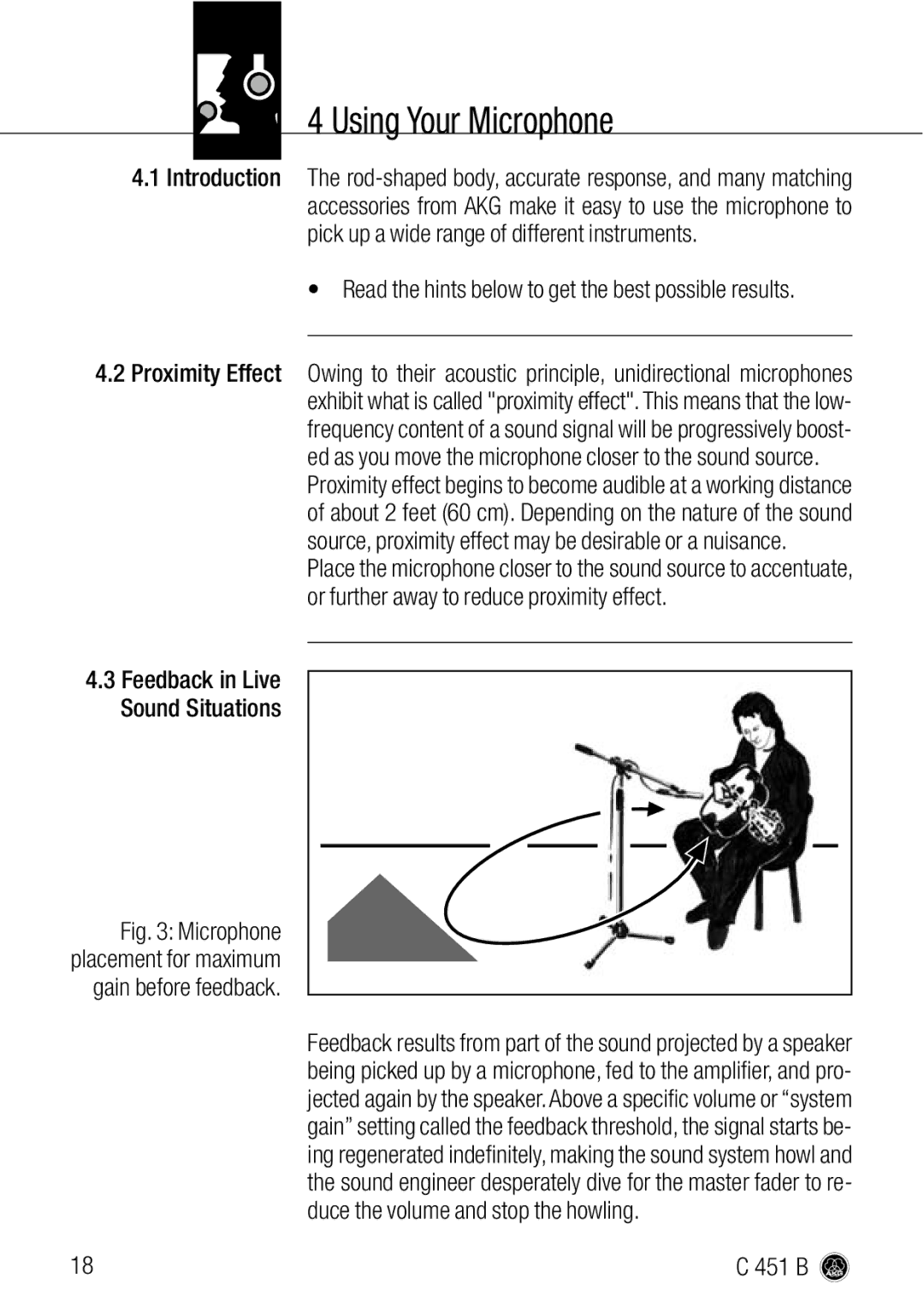
4 Using Your Microphone
4.1Introduction The
• Read the hints below to get the best possible results.
4.2Proximity Effect Owing to their acoustic principle, unidirectional microphones exhibit what is called "proximity effect". This means that the low- frequency content of a sound signal will be progressively boost- ed as you move the microphone closer to the sound source.
Proximity effect begins to become audible at a working distance of about 2 feet (60 cm). Depending on the nature of the sound source, proximity effect may be desirable or a nuisance.
Place the microphone closer to the sound source to accentuate, or further away to reduce proximity effect.
4.3Feedback in Live Sound Situations
Fig. 3: Microphone placement for maximum gain before feedback.
Feedback results from part of the sound projected by a speaker being picked up by a microphone, fed to the amplifier, and pro- jected again by the speaker. Above a specific volume or “system gain” setting called the feedback threshold, the signal starts be- ing regenerated indefinitely, making the sound system howl and the sound engineer desperately dive for the master fader to re- duce the volume and stop the howling.
18 | C 451 B |
